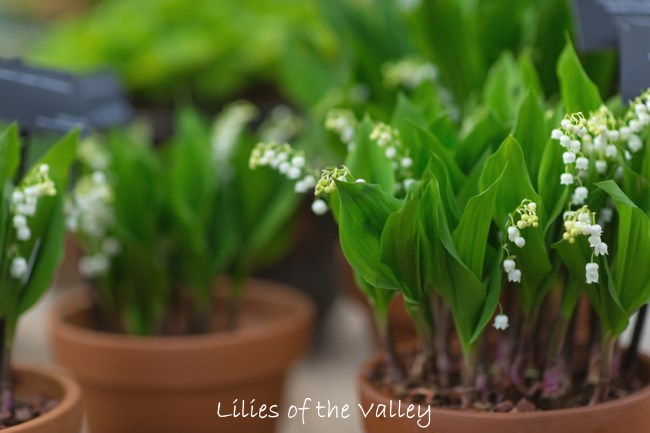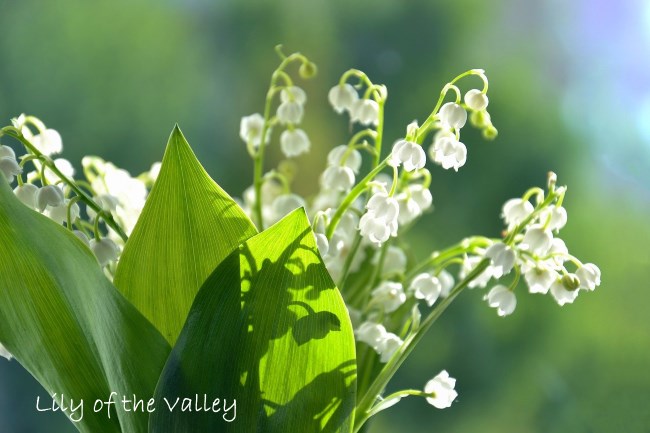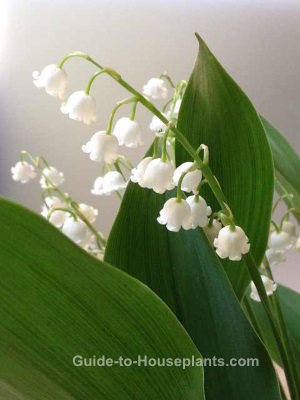How to Grow Lily of the Valley Flowers
Fragrant lily of the valley flowers are a delight when they bloom in spring. But why wait? These types of lilies are easy to bring into bloom indoors in the middle of winter.
Known botanically as Convallaria majalis, these shade-loving flowers are also easy to find at garden centers in spring. Here you'll discover how to grow them in pots, when to water, how to bring these perennials back into bloom, and more.
 Spring-blooming Lilies of the Valley are easy to grow indoors. Photo © Anna Chaplygina
Spring-blooming Lilies of the Valley are easy to grow indoors. Photo © Anna ChaplyginaGet to Know Lily of the Valley
Sweetly scented clusters of nodding bells are nestled between pairs of broad, pointy tipped leaves. Once the flowers fade, they're followed up by a show of red berries.
Don't let this lily's delicate appearance fool you. This hardy plant is a vigorous grower. It spreads quickly from rhizomes and will need to be potted up or divided each year.
You'll find lily of the valley plants for sale in nurseries and online florists' delivery sites already potted or shipped bareroot, ready for planting.
Lily of the Valley Varieties
Several good varieties are available. Convallaria majalis 'Fortin's Giant' has large white blooms and is good for forcing.
'Prolificans' and 'Flore Pleno' are stunning with double flowers and 'Rosea' has charming pale-pink flowers. 'Variegata' and 'Green Tapestry' are varieties with creamy white-striped leaves.
 The "secret" to keeping flowers fresh for several weeks is to keep the plant fairly cool.
The "secret" to keeping flowers fresh for several weeks is to keep the plant fairly cool.These pristine, white bell-shaped blooms are often given as gifts and symbolize purity and happiness. Lily of the valley flowers are popular in wedding bouquets, and also used to celebrate May Day in Europe.
Is lily of the valley poisonous? Yes. All parts of lily of the valley are highly poisonous to people, cats and dogs.
Did you know...
Lilies of the valley are classified in the lily (Lilaceae) family, but were once in a class all their own -- Convallariaceae.
How to Get Lily of the Valley Flowers to Bloom Again
Beautiful lily of the valley flowers will bloom for about 4 weeks, then can be brought back into bloom the next year. Here are the steps:
- When flowers die, keep soil lightly moist and give your lily indirect sunlight until it goes dormant, typically in late summer or fall.
- Wait till the foliage turns yellow and withered, then cut it back. Don't pull the leaves off with your hands. Use sharp scissors or pruners to avoid damaging the rhizome. Put the dormant plant in a cool, dark spot giving it just enough water to prevent the rhizomes from drying out completely.
- Dormant rhizomes can be restarted in winter or spring. This is a good time to divide them. Pot 5-6 rhizomes together for an attractive planting, using fresh soil. Place rhizomes horizontally, root-side down and top with just enough soil to cover the rhizome. Put the pot back in a warm (about 65°-70°F/18°-21°C), bright spot (out of direct sun) and keep the soil lightly moist. Blooms should appear in 6-8 weeks.

Lily of the Valley Care
Origin: European and Asian woodlands
Height: Up to 10 in (25 cm)
Light: Low to bright light.
Water: Keep soil evenly moist, not soggy. Established plants will tolerate drier soil.
Humidity: Average room (around 40% relative humidity). Indoor air can become extremely dry; take a look at these easy ways to raise the humidity for your houseplants.
Temperature: Cool to average temperatures 60-70°F/16-21°C. Lilies of the valley are cold-hardy to USDA Zone 2, if you want to plant them outdoors. Their natural bloom time is in late spring.
Soil: Peat moss based potting mix with added perlite and/or vermiculite for faster drainage. African violet potting mix is ideal.
Fertilizer: Feed monthly with a balanced water-soluble fertilizer diluted by half while plant is growing. Do not feed while dormant.
Propagation: These lilies grow from creeping rhizomes that spread quickly under the soil. Divide lily of the valley plants when they become crowded. Cut the rhizomes apart, leaving some roots attached to each piece. Lilies grown indoors will not set seed, but you can grow them from purchased seeds.


